Subscription growth hack (by PayKickstart)
Facebook Group - 3,932 members
Visit Group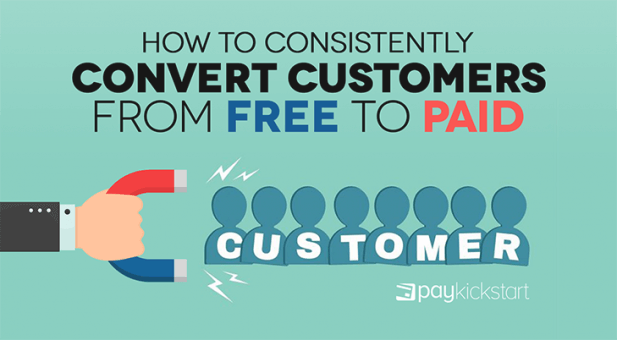
In most businesses, the goal is to convert customers from free to paid which is easy to say but much harder to do.
We live in a world of choice and competition.
It’s a good thing because it keeps us on our toes. It’s a bad thing because customer acquisition is tougher than ever.
Giving away your product for free helps reduce the inherent barriers to entry and if you do a good job then they become paying customers.
What happens when you have freemium customers that just don’t want to start paying?
What about when your free trial conversion rate is abysmal? How do you convert customers from free to paid more consistently?
Those are good questions and in this post I’ll look at a few strategies that’ll help you turn more free users into paying customers.
Your free trial serves a specific purpose. It’s there to give potential customers a taste of your premium product. They get to decide if it will work with their current workflow or meet their needs.
How long, if they focus and use the product, does it take for them to decide that? Chances are that a 30-day trial or even a 14-day trial is more than enough time.
The problem is that we like free things. Even if someone assesses your product and decides it’s something they’ll continue using, they’ll stay on the free trial until the end so they won’t pay until it’s necessary.
You can sidestep this tendency by incentivizing free trial users to upgrade to a paid plan. This also works for freemium users. They’re using the app for free but there are limits associated with their accounts. When they encounter those limits, gently remind them what’s possible with a premium account.
Spotify does this with a lot of it’s in app messaging.
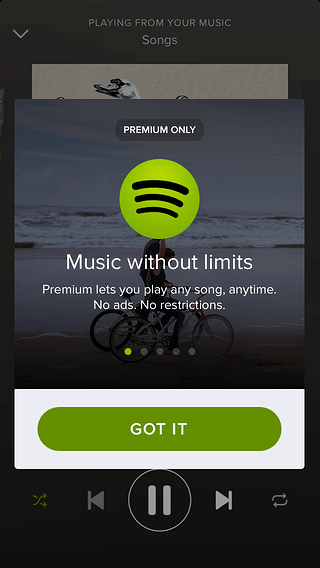
According to data from Totango, 70% of free trial users sign up but don’t use the product while 10% will use the product intermittently.
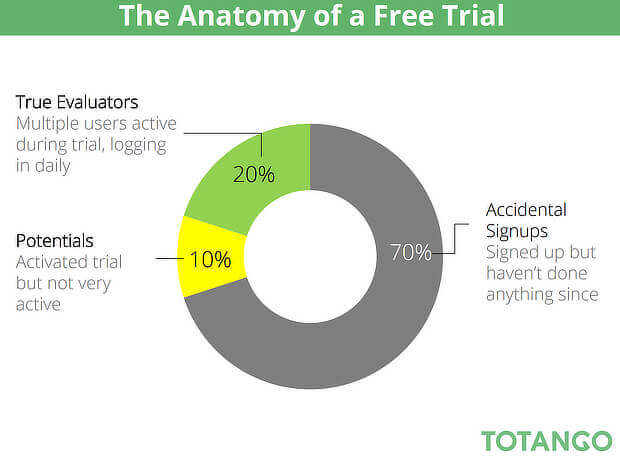
According to Crazy Egg, people that actively use your trial for 3 days are 4x more likely to convert. The problem isn’t the time it takes to evaluate your product. That’s done quickly. The problem is that most people aren’t engaged in the first place.
I’ll look at engagement later in this article but Instead of increasing the length of your free trial, which most people don’t need, reduce it. If, after the shortened trial period they’re not ready to make a choice, go back and offer them extra time.
Why would you do this?
People sign up for products all the time and forget to use them. It happens to the best of us. When you reach out and ask them if they need more time, they have to make a decision.
If a prospect says yes to the extension they’re more likely to use and evaluate the app because they’ve actively expressed interest and committed to giving it a fair shot.
I fell out of touch with an old friend of mine for years. One day, out of the blue, he called me and made small talk for about a minute. After that, he asked me to lend him a couple hundred dollars.
Now, I don’t have any problem lending someone money when they’re in a tight spot. He caught me off guard. I’ve not spoken to him for a long time, didn’t know where he was, and didn’t what he was doing. Could he even pay me back?
In the end, I gave him an amount I could part with and not worry whether he paid me back or not.
How do you think it feels when someone signs up for your app then after 2 weeks you ask them to upgrade? No preamble, no onboarding, and not warming up. It’s not likely to convert customers who are on the fence.
Even if you do send out regular email blasts, there’s a difference between an autoresponder and triggered emails that go out based on actions people perform.
DragDropr is a page builder that uses projects to organize content created on the platform. The first step to deriving value from the product is to create a project then create a page.
If you sign up for a trial of Dragdropr but don’t create a project then you’ve not used the tool. The team knows this and sends triggered emails to get you to use the software.
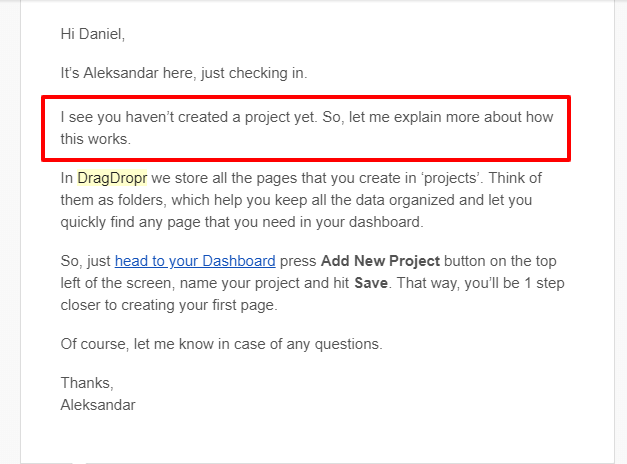
In the above email, it walks you through how to get started with projects and by extension, DragDropr.
Freemium is tricky because a lot of users are happy with the free version of the product or simply can’t afford to upgrade. You can still convert customers and unlock value from them.
Many freemium companies limit the use of their core product and when a free user hits those limits, they’re prompted to upgrade. This works but the conversion rate is low.
There’s a growing trend that gives away the core product for free but derives revenue from add-ons. An example of this is Candy Crush. It’s free to play but you can buy items in game to enhance your experience or progress faster. In 2018, players spent an average of $4.2 million a day. Not bad for a freemium app.
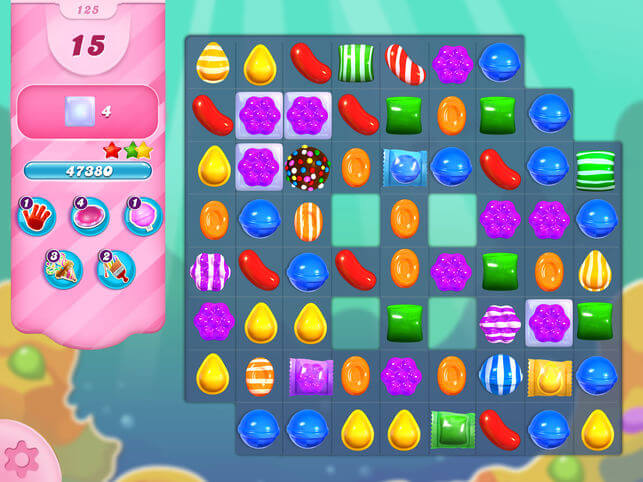
This doesn’t apply to games alone. The B2B SaaS app Profitwell gives away subscription metrics software for free but has add-on products it uses to generate millions of dollars in revenue.
It’s hard to sell a product to someone who doesn’t understand how to use it. That’s why we have free trial users and freemium users. We want them to use the product and fall in love with it.
A new user can’t fall in love with a product if they don’t test it out.
Those users are less responsive to upgrade requests or trial expiring notification messages. It’s important to prioritize engagement first before you kick your sales funnel into high gear.
Send out regular messages that highlight features, encourage them to get back in the app, or even suggest a demo. If it’s a mobile app then you can also send push notifications to their device.
Whatever you do, focus on engagement before the sale. All of the previous strategies are built on the fact that people are using the product in the first place.
Free users are an (almost) inevitable part of subscription businesses. Whether they’re free indefinitely or free for a limited amount of time doesn’t matter.
What matters is what you’re doing to turn them into paying customers.
This post has touched on a few strategies you can implement today to increase your free trial conversion rate. None of them can be implemented once and forgotten. It’s important to continue tweaking them over time.
Let me know what you think of the strategies I outlined to convert customers from free to paid users in the comments and don’t forget to share.
Daniel Ndukwu is a regular contributor to the PayKickstart blog. He has extensive experience with online businesses, conversion optimization, and subscription revenue models. When he's not writing insightful content, he works with other entrepreneurs to help them grow their bottom line.
Read More About Daniel Ndukwu